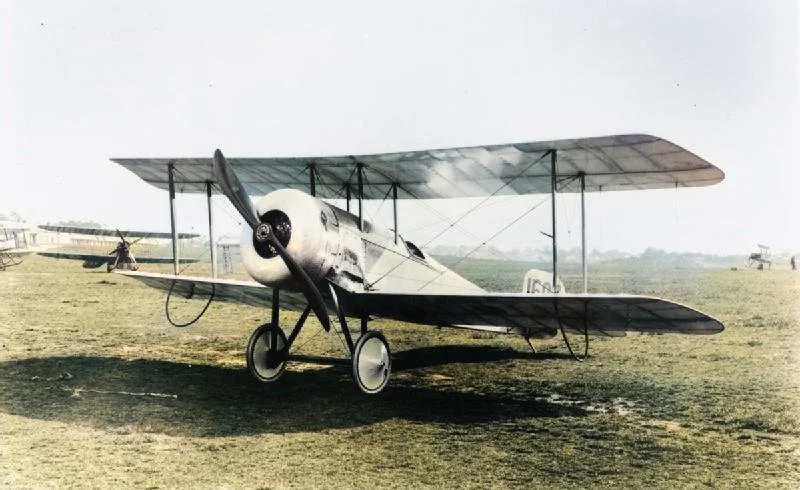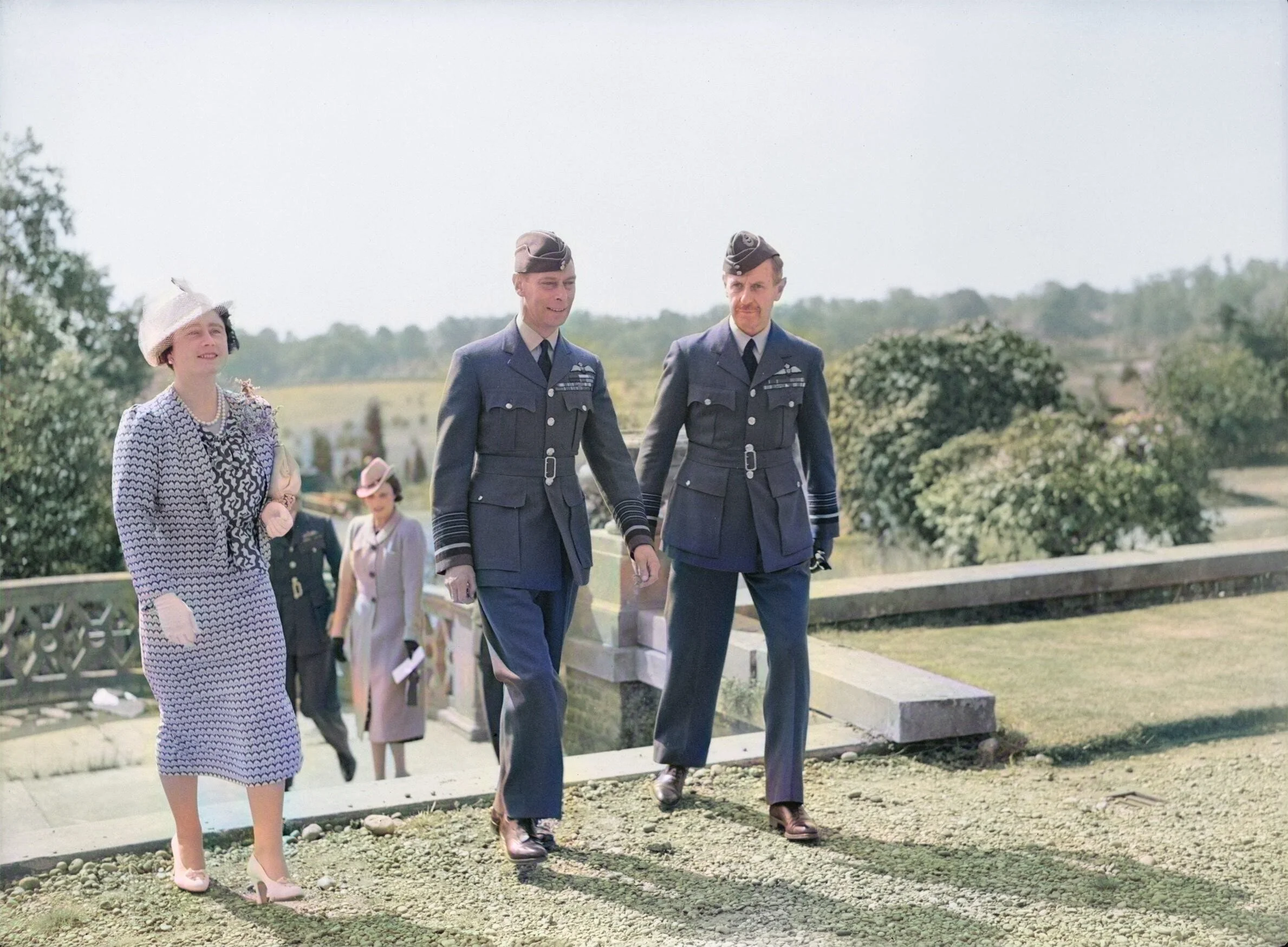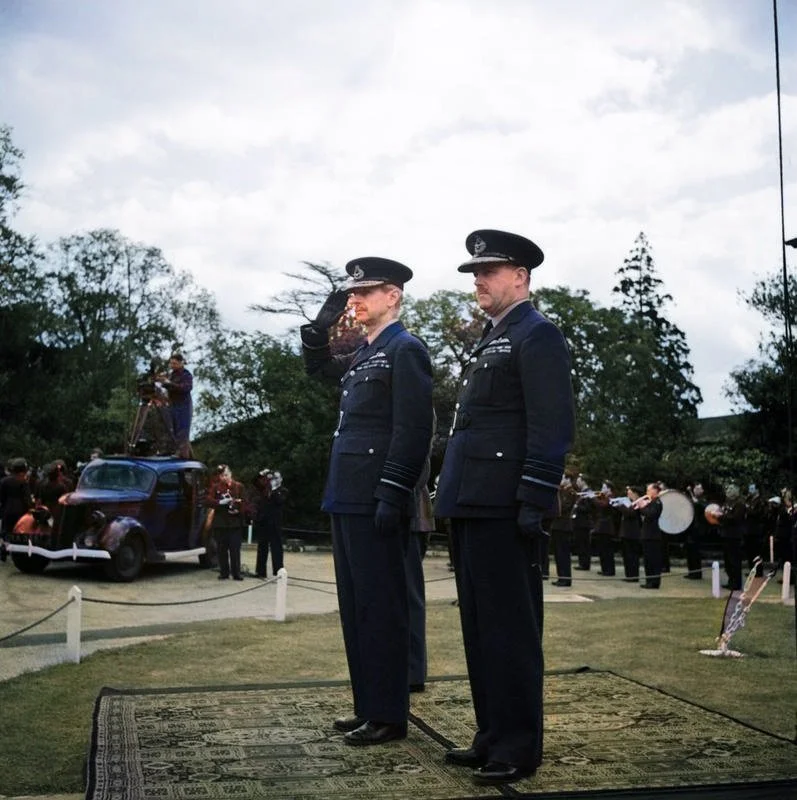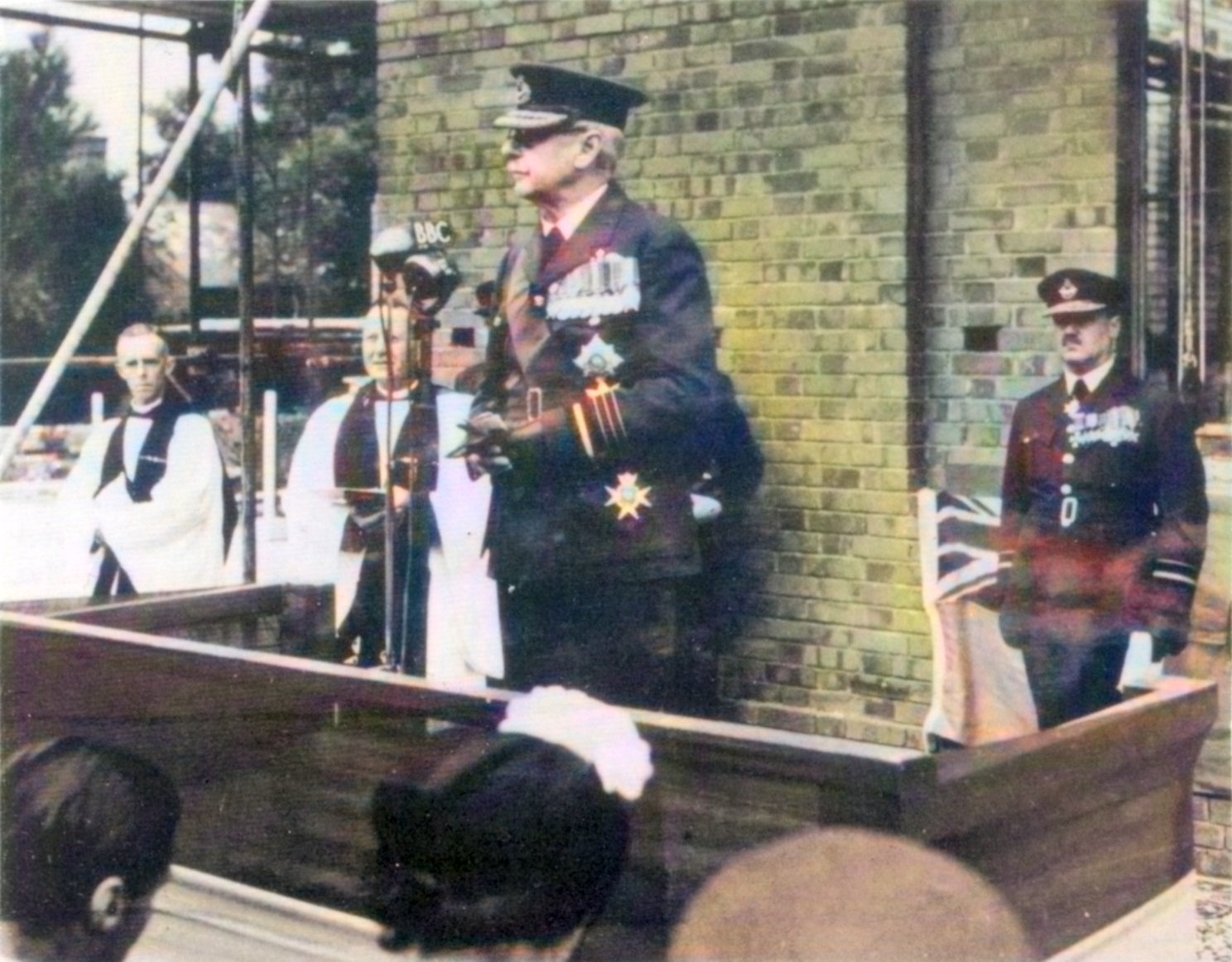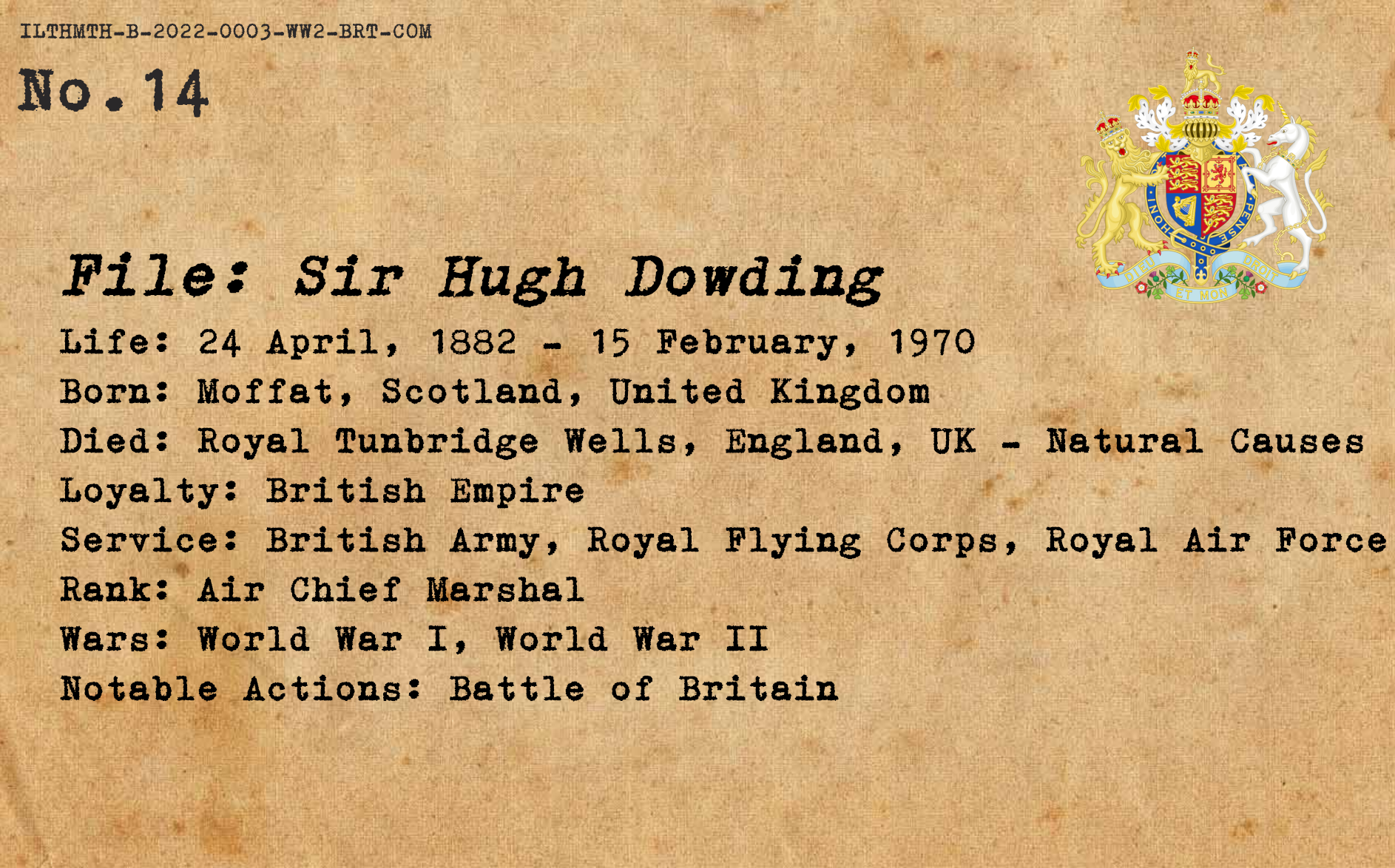Sir Hugh Dowding
“I believe that, if an adequate fighter force is
kept in this country, if the fleet remains in being, and
if Home Forces are suitably organised to resist invasion,
we should be able to carry on the war single handed for
some time, if not indefinitely. But, if the Home Defence
Force is drained away in desperate attempts to remedy the
situation in France, defeat in France will involve the
final, complete and irremediable defeat of this country.”
On April 24, 1882 Hugh Caswall Tremenheere Dowding was born to a professor at St. Ninian’s Boys’ Preperatory School in Scotland. The young man would be educated here as he grew up, as well as attending Winchester College in England and eventually graduating from the Royal Military Academy at Woolwich with a commission as an artillery officer.
An RFC Bristol Scout in France
Dowding would serve across the British Empire in the early years of his career from 1900 until the beginning of the Great War in August of 1914, where Dowding, having already expressed an interest in flying and gotten his wings, transferred to the Royal Flying Corps, eventually ending up in command of No.16 Squadron in mid 1915 after serving with No.6 and No9 Squadron. He would clash with his superiors as well as his subordinates, which would eventually lead to his reassignment to a posting in Britain. This would mark the end of Dowding’s active participation in the First World War, and he would be promoted to a temporary Brigadier General by the time the conflict ended in 1918.
An RAF Chain Home radar station, a component of the Dowding System
Returned to his permanent rank of Group Captain after the war, Dowding would serve in Iraq before eventually receiving an assignment as Director of Training at the British Air Ministry in 1926 before returning to the Middle East before the end of the decade. At the same time he was promoted to Air Vice Marshal, followed by a promotion to full Air Marshal in 1933, with a knighthood bestowed in 1934. With this came a posting as Air Council member for Supply and Research, effectively placing Dowding in charge of RAF research and development as well as procurement. It was here that he became familiar with the emerging technology of radar, and when he was promoted again in mid 1937, taking charge of RAF Fighter Command.
Dowding (right) escorts King George VI and Queen Elizabeth on a tour of RAF Bentley Priory
Despite a prevailing opinion in Britain and abroad that modern bomber aircraft could not be effectively countered, Dowding oversaw the creation of an effective system for the aerial defense of Britain, consisting of a networked radar installations, manned observation points and command and control centers for vectoring interception missions against enemy air raids. The nexus of this network was located at RAF Bentley Priory, a country estate near London that had been sequestered by the RAF and served as Fighter Command Headquarters.
RAF ground crewmen rearm a Hawker Hurricane fighter
As the international situation deteriorated in 1939, Dowding’s planned retirement in the mid summer was postponed, and essentially cancelled with the German Invasion of Poland in September leading to the outbreak of the Second World War. As the Germans entered France in May of 1940 and the battle for the continent proceeded poorly for the Allies, Dowding, backed by Chief of Air Staff Sir Cyril Newall, stood firm against repeated requests from the French and Churchill to send more RAF fighters to the untenable situation in France, fearing the depletion of the fighters needed to defend Britain herself once France fell.
Once that occurred, Dowding and his Fighter Command were essentially all that was standing between Hitler’s armies and Britain, and as the Battle of Britain began Dowding had already developed his nickname of “Stuffy”, being considered mostly humorless but also deeply caring about his men. He led what would be known as “The Few” to victory against the massive Luftwaffe onslaught during the summer of 1940, with prudent management of resources combining with the massive success of his radar based Dowding System to end with Dowding being considered the man responsible for the victory.
Dowding with his rival, Trafford Leigh-Mallory, at a ceremony marking the third anniversary of the Battle of Britain in 1943
Not all was well with Dowding at Fighter Command, however. Despite the support of Air Vice Marshal Keith Park, the commander of RAF 11 Group, he was opposed by Air Vice Marshal Trafford Leigh-Mallory and Air Marshal Sholto Douglas, who were proponents of what was termed the “Big Wing” strategy, which required the massing of large formations of aircraft to meet the Germans in force and destroy them in a decisive air battle, rather than wearing them down as Dowding intended. This would continue to undermine Dowding as the Battle of Britain petered out, and a perceived failure to counter German night raids on cities also helped Dowding’s opponents to push him aside, being replaced by Douglas in late 1940.
Following his dismissal from Fighter Command Dowding was posted to the United States as a representative of the Ministry of Aircraft Production, but he failed to work well with his colleagues in this post, and would retire from the Royal Air Force in late 1942.
Dowding at a ceremony laying the foundation stone of the Battle of Britain Memorial Chapel at RAF Biggin Hill
After his retirement some bad blood remained within the upper echelons of the RAF command structure against Dowding, but Churchill would remain a staunch defender of him, despite his general acceptance that a more aggressive leader was needed for Fighter Command as the war entered a new phase. Churchill was unhappy that Dowding was not awarded the rank of Marshal of the Royal Air Force after his retirement, and ensured that he was awarded a peerage as Baron of Bentley Priory.
In his retirement, Dowding became increasingly bitter over his downfall, blaming a conspiracy of big wing advocates for shunting him aside. This would in turn lead to an continued hostile relationship with the RAF leadership. Despite this, he remained extremely popular with the airmen who had fought under him during the Battle of Britain, and his popular reputation as the man responsible for saving Britain endured. He would later serve as a technical advisor for the 1969 film Battle of Britain, notably sitting in the room as Sir Laurence Olivier portrayed him for the cameras.
In his later life Dowding became a vegetarian and animal welfare activist, as well as a spiritualist. He authored several books on spiritualism, and was a proponent of the concept of reincarnation as well as a rejection of traditional religion. His belief in the existence of fairies led to a perception of eccentricity by many, although his wartime reputation remained intact even past his death in early 1970. His remains were cremated and interred in the RAF Chapel at Westminster Abbey, underneath the Battle of Britain Memorial Window.

